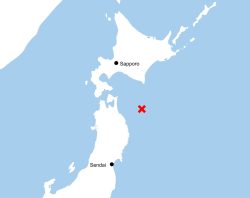11:30 JST, August 3, 2023
Sea levels in Singapore could increase by 1.37 meters by 2150, if temperatures rise by more than 4 C by the end of the century because of excessive greenhouse gas emissions, a new study has found.
This was one of the projections from a study conducted by Nanyang Technological University’s (NTU) Earth Observatory of Singapore, which looked at sea-level rise beyond 2100 by taking into consideration the different trajectories of global carbon dioxide emissions based on the latest available data.
In such a scenario, low-lying coastal regions and reclaimed land could experience more frequent and extensive flooding as 30% of Singapore’s land area is less than 5 meters above mean sea level, said the Meteorological Service Singapore (MSS) and national water agency PUB.
“A larger proportion of Singapore’s land, including densely populated areas and critical infrastructure, could be vulnerable to regular and even severe flooding if the rate and magnitude of the rise accelerate,” they added.
The NTU study found that sea levels could still rise by 0.95 meters by 2150, even if carbon dioxide emissions remain at current levels until the end of the century.
PUB had estimated that the mean sea level around Singapore is projected to rise by up to 1 meter by 2100.
MSS and PUB said the findings will help scientists and policymakers improve adaptation and mitigation measures, as they gain a more comprehensive understanding of the long-term impacts of climate change and rising sea levels on Singapore.
So far, the world has already warmed by almost 1.2 C above pre-industrial levels, and humanity must keep global warming to 1.5 C to avert the more catastrophic impacts of climate change.
As global warming causes ocean temperatures to march upwards, the water expands as it heats up, causing sea levels to rise.
At the same time, global warming is accelerating the melting of ice sheets in Greenland and Antarctica, causing more water to be drawn to the equator — which affects low-lying nations such as Singapore.
The study, which was led by the observatory’s senior research fellow Timothy Shaw, found that projected changes in future sea levels will occur over timescales significantly faster than they have in the past.
During what was known as the last glacial maximum, the large and thick masses of ice were at their maximum area across the globe, leading to low sea levels and larger amounts of terrestrial space.
However, as the world exited this period of prolonged cooling, temperatures began to rise and the glaciers began to melt over the next 20,000 years into the Holocene, which is the current geological epoch.
“But today, we are witnessing much more rapid changes as temperatures rise in response to anthropogenic factors,” the paper noted.
The study was published in June in the scientific journal Communications Earth & Environment.
Hence, under a high-emissions scenario, the projected rates of sea-level rise by 2150 would be faster than any other period in the last 21,500 years.
Under a moderate-emissions scenario, the scientists had statistically estimated that rates of sea-level rise were last exceeded only when ice rapidly melted during the last deglacial period between 9,000 and 14,000 years ago, which also led to significant landscape and population changes in Southeast Asia.
Dr. Shaw noted that the projected rates of sea-level change under moderate- to high-emissions scenarios could also make it difficult for coastal ecosystems such as mangroves to survive.
Mangroves buffer the coastline from major storm events and sea-level rise.
A 2020 study by NTU found that existing mangrove habitats may not survive beyond 2050 if sea levels continue to rise at rates above 7 millimeters per year. The current rate of increase is 4 millimeters a year.
“The difference between our future climate pathways is clear. A low-emissions pathway that slows the rate of sea-level rise allows nature-based solutions such as mangroves to thrive and continue providing many ecosystem services,” Dr. Shaw added.
The MSS spokesman also noted that the mean sea-level rise projections may vary at different locations in Singapore, depending on factors such as local vertical land motion changes, including sinking land, and ocean circulation changes.
The ongoing work at the Centre for Climate Research on Singapore’s sea-level projections, as part of the Third National Climate Change Study (V3), would potentially narrow down the current range of uncertainty at different locations.
The V3 study, which will be completed by September, looks to provide localized and advance climate projections for Southeast Asia, particularly Singapore.
"World" POPULAR ARTICLE
-

8 Japanese Nationals Stranded on Indonesia’s Sumatra Island
-

China Urges Citizens to Refrain from Visiting Japan, Citing Surge of Crimes Against Chinese
-

Mozambican Cooking Class Held in Matsuyama, Ehime Pref.; Participants Don Aprons, Bandanas Made from Traditional Mozambique Fabric
-

China Steps Up ‘Wolf Warrior’ Diplomacy Against Japan, Hurling Accusation About Plutonium Stockpile
-

Taiwan’s Lai Calls on China to Exercise Self-Restraint; Says Attack on Japan Endangers Regional Peace and Stability
JN ACCESS RANKING
-

Japan’s Hopes for Seafood Exports Shot Down in China Spat
-

Essential Services Shortage to Hit Japan’s GDP By Up to ¥76 Tril. By 2040
-

Japan to Charge Foreigners More for Residence Permits, Looking to Align with Western Countries
-

Japan Exports Rise in October as Slump in U.S. Sales Eases
-

Japan GDP Down Annualized 1.8% in July-Sept.



















